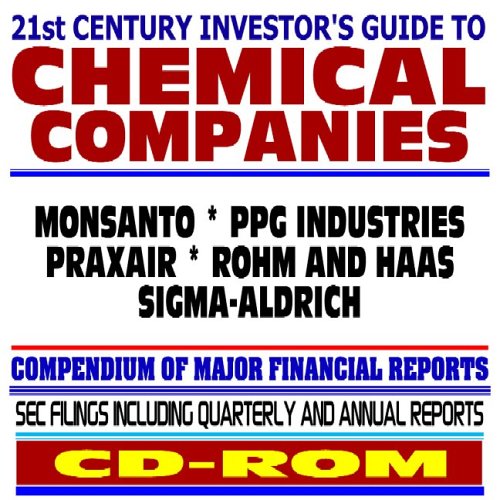Contents:


The production process involves the conversion of raw materials into finished goods. The basis for business classification is the activities carried out by businesses. Business is an economic activity that involves the exchange of products and/or services for profits or other motives. Simply put, business is any transactional activity people engage in to make a profit. Corporations are a separate legal entity created by shareholders.
Warehousing – Warehousing refers to activities involving storage of goods on a large scale in a systematic and orderly manner and making these available when needed. Internal trade may take place between two parties located in the same city or in different cities of a country. Consumer Goods – Consumer goods are those goods which are used by consumers, for example, TV, refrigerator, cloth, edible oil, toothpaste, hair oil, etc. Income to satisfy their wants to the maximum possible extent. Commerce involves activities which keep in view what to distribute, where and when at the most affordable price.
The public sector is the part of the economy owned and controlled by the government. Business activity in the public sector varies from country to country. Often health care, postal services and the electricity network are owned and controlled by the government. Industry is concerned with the making or manufacturing of goods.
These industries mainly relate to construction or fortification of buildings, bridges, roads, dams, canals, etc. The raw material suppliers to this industry are manufacturing industries (like that of iron and steel, cement, lime, mortar, etc.) and extractive industries (such as stone, marble, etc.). The unique feature of this industry is that their output is not carried and sold in the markets but are rather constructed and fabricated at fixed sites. Assembly Line – This hybrid of manufacturing industries primarily brings together a number of finished products and assembles them to form a new finished product.
Four Types of Business Transformation.
Posted: Tue, 05 Jul 2022 07:00:00 GMT [source]
Industries that draw out or extract products from natural sources are known as Extractive Industry. Some of the examples of extractive industries involve lumbering, farming, mining, hunting, and fishing operations. Semi-finished goods or raw materials are processed and converted into finished goods by the manufacturing sector. Promotes the activities of the primary and secondary sectors by providing facilities for the easy flow of goods from each sector.
In an incorporated body, such as a Limited Liability Company , the owners of the business (the ‘members’ or ‘shareholders’) limit their liability by their capital contribution to the firm. This means, if the business becomes insolvent , the owners’ potential loss is limited by that contribution. It performs the function of holding the goods for the period till it is sold to the final consumer. This facility is available to manufacturers and traders for such time till they decide to move the goods from one point to another. Warehousing means providing facilities for storing the goods for the period from its manufacture to the time it is sold. Generally there is a gap between the manufacture of the goods and its sale.
This type of resource is usually referred to as human resources, as it involves human input physically or through technology in the running of a business. Like most large companies that are listed on stock exchanges, Apple, otherwise known as Apple Inc., was incorporated soon after the company began its operations. To this day, Apple remains one of the largest companies in the world.

The goods produced may either be used by other enterprises as raw materials for further production, they are known as “producers goods”. The production of plant, machinery equipment etc. are, examples of producers’ goods. When goods are finally used by consumers they are known as consumers’ goods. The examples of such goods are cloth, bread, groceries, drugs, etc.
These industries use the commodities of manufacturing industries such as iron and steel, cement or lime. Financing activities refer to all those activities that fund the business but are not directly related to the revenues from goods and services. Common financing activities include bonds, loans, and share issues. The commerce business classification is further divided into trade and aids of trade.
Businesses can be for-profit items/services, or they can be non-profit groups that function to fulfill a humane mission or further a social cause. The term “business” also refers to the organized activities and efforts of individuals to build and sell goods and services for profit. Businesses range in scale from single proprietorship to multinational corporations.
”Producer’s goods” are the goods which are used in the production of other goods like machines, tools, equipment etc. come under this category. Industrial activities lead to production of variety of goods for various purposes. Goods produced by industry may be Consumer’s Goods or Producer’s Goods. For example, cotton textile industry refers to all manufacturing units producing textile goods from cotton. Similarly, electronic industry would include all firms producing electronic goods. Meaning – Activities involving distribution of goods and services.
Also, he may have to insure the goods as a means of protection against the risk of loss by theft or fire. He will also require money to buy or store the goods before selling the same. When goods or services are imported into one country to export the same to some other country with or without making any change, it is known as entrepot trade or reexport trade. Payment for goods and services in home trade is made in the currency of the home country. Thus, goods sold by a trader in Brooklyn to a buyer in New York or the same locality, village, or town are called home trade.
Employees are also required to be protected against the risks of accident and occupational hazards. By getting their goods insured, producers can avoid the risk of loss of goods. External or foreign trade consists of the exchange of goods and services between persons or organisations operating in two or more countries. Auxiliaries to trade – Activities which are meant for assisting trade are known as auxiliaries to trade , e.g., transport, communication, banking, insurance warehousing, advertising, etc. Trade – It refers to buying and selling of goods and services with the objective of earning profit.

Traditional and backward economies will have comparatively static environment. Small-scale Industry- All those industries which invest an amount of up to Rs. 1 crore in their plant and machinery are termed as small-scale industry. These industries have higher cost of production as compared to large-scale industry due to their demerit of lower production level. Horizons are global experts when it comes to setting up a business, or hiring in an overseas location. In a partnership, all major decisions need to be signed off by each of the partners. This makes it more difficult to respond to events and move quickly.
Businesses often require business plans before operations begin. A business plan is a formal document that outlines the company’s goals and objectives and lists the strategies and plans to achieve these goals and objectives. Business plans are essential when you want to borrow capital to begin operations. The term business often refers to an entity that operates for commercial, industrial, or professional reasons. The concept begins with an idea and a name, and extensive market research may be required to determine how feasible it is to turn the idea into a business. Some businesses run as small operations in a single industry while others are large operations that spread across many industries around the world.

An article of association must also be drafted while starting an LLC and the multiple streams of income must have relevant certificates as required by the industry. These companies raise capital by publicly trading the shares and can spread risks through issuing a share. International or global businesses which produce and sell products in various countries are called multi-national corporations . They allow local producers in foreign countries to produce their products.
However, the process of exchange is beset with several hindrances. The principal function of commerce is to remove these hindrances so as to ensure a free and interrupted flow of goods and services from producers to consumers. These industries are concerned with the conversion or transformation of raw materials and semi-finished products into finished products. Manufacturing industries supply most of the products for daily use.
A corporation’s life is unlimited because any people with resources can become shareholders. Mostly, professionals are employed to run or manage the business. National and international statistical agencies use various industry-classification schemes to summarize economic conditions.
As a result, we have different people and different firms engaged in trade, banking, insurance, transportation, warehousing, packaging, etc. This leads to better performance of each commercial activity and greater economy in the use of scarce resources. This Industry is engaged in the conversion of raw materials into semi-finished or finished goods. This industry creates form utility in goods by making them suitable for human use.
Business is affected by multiplicity of factors and forces, which constitute the environment of business. As most of these factors are uncertain and also unpredictable, the business firm will not have any control over them. In a sense, C corps are ‘taxed twice’, as any income of the corporation is subject to income tax, while any dividends issued are subject to dividend tax. As the partnership is a creation entirely of the free decision of two or more individuals, it can be structured however those parties like, usually without reference to statute. INVESTMENT BANKING RESOURCESLearn the foundation of Investment banking, financial modeling, valuations and more. They can result in exports or imports that influence the trade balances of the economy.
Congratulation!